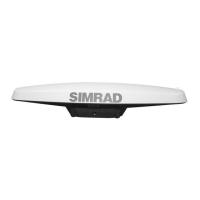| 19
Installation | HS80/HS80A/MX575C/MX575D User Manual
PG No.
(PGN)
Description
Level Default Update
Rate (msec)
Freq
(Hz)
129033 Time & Date
Single transmission that provides UTC
time, UTC Date, and Local Offset.
B 1000 1
129539 GNSS DOPs
Provides a single transmission containing
GNSS status and dilution of precision
components (DOP) that indicate the
contribution of satellite geometry to the
overall positioning error. There are three
DOP parameters reported: horizontal
(HDOP), Vertical (VDOP), and time (TDOP).
B 1000 1
129540 GNSS Sats in View
GNSS information on current satellites in
view tagged by sequence ID. Information
includes PRN, elevation, azimuth, SNR,
defines the number of satellites; defines
the satellite number and the information.
B 1000 1
Powering the Smart GPS compass
Power considerations
For best performance use a clean and continuous 12-24 VDC power supply. The Smart GPS
compass power supply circuit features reverse polarity protection but will not operate with
reverse polarity.
See “Power” on page 32 for complete power specifications.
Connecting to a power source
¼ Note: This section refers to powering the MX575C/MX575D unit via the serial cable
connection. The HS80/HS80A power is taken from the NMEA 2000 main buss. Follow the
standard procedure for powering up via NMEA 2000.
Before you power up the Smart GPS compass you must terminate the wires of the power
cable as required. There are a variety of power connectors and terminals on the market from
which to choose, depending on your specific requirements.
Warning: Do not apply voltage higher than 36 VDC. This will damage the receiver and void the
warranty.
To interface the Smart GPS compass power cable to the power source:
• Connect the red wire of the cable’s power input to DC positive (+)
• Connect the black wire of the cable’s power input to DC negative (-)
The Smart GPS compass will start when an acceptable voltage is applied to the power leads
of the extension cable.
Electrical isolation
The Smart GPS compass’s power supply circuit is isolated from the communication lines and
the PC-ABS plastic enclosure isolates the electronics mechanically from the vessel (addressing
the issue of vessel hull electrolysis).

